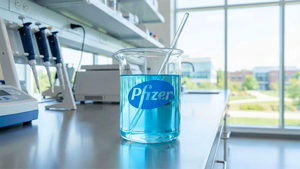Process of Coal-Water Slurry – Industry Trends and Practices
Coal Water SlurryI. Physical Properties and Functions
Coal-water slurry is a slurry made of coal, water and a small amount of chemical additives. According to the purpose, coal-water slurry is divided into high-concentration coal-water slurry fuel and coal-water slurry for Texaco furnace gasification. Coal-water slurry can be pumped, atomized, stored and ignited and burned in a stable status. About 2 tons of coal-water slurry can replace 1 ton of fuel oil.
Coal-water slurry for burning outperforms in high-combustion efficiency, energy saving and environmental benefits, one important part of clean coal technology. Coal-water slurry can be transported over long distances by pipeline transportation with low investment and low operating costs. It can be directly burned without dehydration after arriving at the terminal, and the storage and transportation process is fully closed.

Water will cause heat loss and could not generate heat in the combustion process. Therefore, the concentration of coal is ought to reach a relative high level -- 65 ~70% in general. Chemical additions are about 1%. The heat loss caused by water accounts for about 4% of the calorific value of coal-water slurry. Water is an inevitable raw material in gasification. From this point of view, the coal concentration can be lowered to 62% ~ 65%, which may cause potential increasing oxygen combustion.
In order to facilitate combustion and gasification reactions, coal-water slurry has certain requirements for coal fineness. The upper limit of the particle size of the coal-water slurry for fuel (the particle size with a pass rate of not less than 98%) is 300μm, and the content of less than 74μm (200 mesh) is not less than 75%. The fineness of the coal-water slurry for gasification is slightly coarser than that of the coal-water slurry for fuel. The upper limit of the particle size is allowed to reach 1410μm (14 mesh), and the content of less than 74μm (200 mesh) is 32% to 60%. In order to make the coal-water slurry easy to pump and atomize, the coal-water slurry also has requirements for fluidity.
At room temperature and a shear rate of 100s, the apparent viscosity is generally required to be no higher than 1000-1500mPas. The coal-water slurry used in long-distance pipeline transportation requires an apparent viscosity of no more than 800mPa·s under low temperature (the lowest temperature of the year for buried pipes underground) and a shear rate of 10s-1. In addition, it is also required that the coal-water slurry has a lower viscosity when it is in a flowing state, which is convenient for use; when it stops flowing and is in a static state, it can show high viscosity for easy storage.
The stability of coal-water slurry during storage and transportation is very important, because coal-water slurry is a mixture of solid and liquid phases, and it is easy to separate solid and liquid, so it is required that no "hard precipitation" is produced during storage and transportation. The so-called "hard precipitation" refers to the precipitate that cannot be restored to its original state by stirring the coal-water slurry. The ability of coal-water slurry to maintain the performance of not producing hard precipitation is called the "stability" of coal-water slurry. Coal-water slurry with poor stability will seriously affect production once precipitation occurs during storage and transportation.
II. Overview of Coal-Water Slurry Preparation Technology
Coal-water slurry requires high coal concentration, fine particle size, good fluidity, and good stability to avoid hard precipitation. It will be difficult to meet all the above properties at the same time, because some of them are mutually restricted. For example, increasing the concentration will cause the viscosity to increase and the fluidity to deteriorate. Good fluidity and low viscosity will make the stability worse. Therefore, it is necessary to monitor the concentration in real time. The Lonnmeter handheld density meter has an accuracy of up to 0.003 g/ml, which can achieve accurate density measurement and accurately control the density of the slurry.

1. Correctly Select the Raw Coal for Pulping
In addition to meeting the requirements of downstream users, the quality of coal for pulping must also pay attention to its pulping properties - the difficulty of pulping. Some coals are easy to make high-concentration coal-water slurry under normal conditions. For other coals, it is difficult or requires a more complex pulping process and a higher cost to make high-concentration coal-water slurry. The pulping properties of raw materials for pulping have a great impact on the investment, production cost and quality of coal-water slurry of the pulping plant. Therefore, the law of coal pulping properties should be mastered, and the raw coal for pulping should be selected according to the actual needs and the principles of technical feasibility and economic rationality.
2. Grading
Coal-water slurry not only requires the coal particle size to reach the specified fineness, but also requires a good particle size distribution, so that coal particles of different sizes can fill each other, minimize the gaps between coal particles, and achieve a higher "stacking efficiency". Fewer gaps can reduce the amount of water used, and it is easy to make high-concentration coal-water slurry. This technology is sometimes referred to as "grading".
3. Pulping process and equipment
Under the given raw coal particle size characteristics and grindability conditions, how to make the particle size distribution of the final product of coal-water slurry achieve a higher "stacking efficiency" requires a reasonable selection of grinding equipment and pulping process.
4. Selecting Performance-Matching Additives
In order to make the coal-water slurry achieve high concentration, low viscosity, and good rheology and stability, a small amount of chemical agents, referred to as "additives", must be used. The molecules of the additive act on the interface between coal particles and water, which can reduce viscosity, improve the dispersion of coal particles in water, and improve the stability of coal-water slurry. The amount of additives is usually 0.5% to 1% of the coal amount. There are many varieties of additives, and the formula is not fixed and must be determined through experimental research.
Media Contact
Company Name: SHENZHEN LONNMETER GROUP
Email: Send Email
Country: China
Website: https://www.lonnmeter.com/
More News
View More




Recent Quotes
View More
Quotes delayed at least 20 minutes.
By accessing this page, you agree to the Privacy Policy and Terms Of Service.